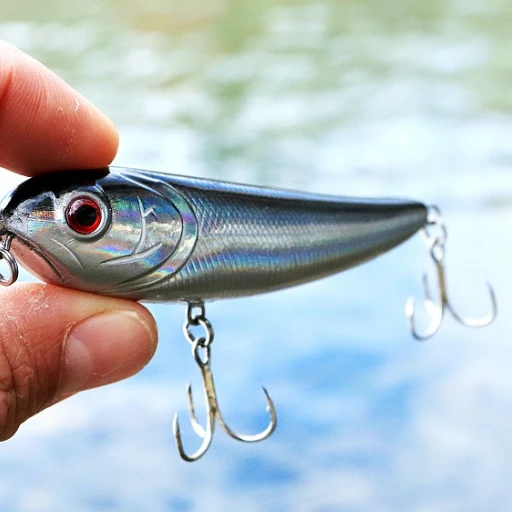The diverse world of catfish species
Exploring the various species of catfish
Catfish are incredibly diverse, boasting nearly 3,000 species distributed across the globe. They are primarily found in freshwater environments but a few, like the Plotosus lineatus, inhabit marine waters. Known for their adaptability, these fish have thrived in different climates from the murky waters of the Mississippi River in the U.S to the vast Mekong River in Southeast Asia. This adaptability has led to catfish being widely studied and cultivated.
Some of the most notable species include the blue catfish (Ictalurus furcatus), which can grow up to 5 feet long and is considered invasive in some regions, particularly the eastern United States. Conversely, the channel catfish (Ictalurus punctatus), is a favorite among anglers and has been extensively farm-raised for food.
The infamous wels catfish (Silurus glanis), native to Central and Eastern Europe, is another giant within the catfish family, known for its significant size and sometimes predatory nature. Then there's the enigmatic Mekong giant catfish (Pangasianodon gigas), one of the world's largest freshwater fish, which has been a subject of fascination and conservation efforts due to its critically endangered status.
Certain species like the electric catfish (Malapteruridae) of Africa have unique adaptations that allow them to generate electric shocks, used for both hunting and defense, showcasing the remarkable evolutionary paths within the order Siluriformes.
The sheer variety within the kingdom Animalia phylum Chordata is remarkable, making catfishes a bewildering classification but fascinating for those who study or fish them. Their distribution spans continents, with different species adapted to varied environments, from the tropical waters of South America to the colder waters of North America.
In the following sections, we will dive deeper into these species' unique characteristics, their habitats, and the human interactions with them, whether in fisheries or on the dining table.
Understanding the order siluriformes
Insights into the siluriformes
When you think catfish, you're diving into the fascinating order of Siluriformes. This order isn't just a one-trick pony; it's home to over 3,000 species! Yeah, that's a lot of fish with whiskers, my friends. This diverse family spans a wide range of habitats, from rivers in the southern United States to murky waters of the Kali River in India and even into deep corners of South America.
But what exactly sets these fish apart? It's all in the name—'Siluriformes'. If you're scratching your head, it comes from the Latin word 'Silurus,' a type of fish known to ancient Romans. This family tree is deeply rooted in both history and nature. Fun fact: some species can trace their lineage back to ancient times, with certain fossils dating back to 96 million years ago! Talk about an old family album!
One exciting member of the clan is the electric catfish, found in Africa. This guy can generate an electric shock of up to 350 volts! That's more than a typical wall outlet in your house. But don't worry, they're more into stunning their prey than giving you a hair-raising experience.
Let's not forget the renowned Mekong giant catfish, which, as its name suggests, is a giant among giants. These behemoths can grow up to 10.5 feet long and weigh nearly 650 pounds. It’s no wonder they’ve become legends in fishing communities.
Siluriformes members aren't just about size and shock value; they're also crucial to their ecosystems. Take channel catfish (Ictalurus punctatus) as an example. Native to North America, they're a staple in both commercial and recreational fishing across the U.S. Their taste is so beloved that they're a key feature in Southern cuisine. Louisiana even holds an annual Catfish Festival to celebrate these mesmerizing swimmers!
The Siluriformes order also embraces the blue catfish (Ictalurus furcatus), which has stirred quite a buzz for being invasive. Particularly in states like Maryland, these fish have disrupted local ecosystems, preying on native species and stirring up ongoing debates among anglers and environmentalists.
But it's not all controversy. When it comes to scientific intrigue, catfish keep researchers hooked. Take the weberian apparatus—a series of small bones that connect the swim bladder to the auditory system. This unique organ helps catfish detect and amplify sound, offering them a survival edge in murky waters. Basically, these fish have their built-in underwater hearing aids.
Feeling a bit overwhelmed by the world of Siluriformes? Don’t be! Think of these fish as the underwater equivalent of a complex spy network—all working together yet each unique. From the Eurasia-bound wels catfish to the farm-raised channel catfish, the order Siluriformes enthralls with its diversity and specialization. And we've only just scratched the surface—wait till you uncover their unique fishing techniques and the controversies brewing around catfish farming!
The role of barbels and the weberian apparatus
Barbels: nature's sensory wonder
Catfish are easily recognized by their barbel pairs—a critical feature that sets them apart from many other fish species. These whisker-like appendages, often referred to as 'feelers,' play a vital role in how catfish interact with their environment. Think of barbels as a catfish's sense of touch and taste all rolled into one. Packed with taste buds, these structures help catfish locate food in murky waters where visibility is low. Imagine dining in complete darkness and still finding your food with ease! Scientific studies have shown that barbels contain a high density of taste receptors. In the wild, catfishes use their barbels to track down prey like insects, smaller fish, and aquatic plants, ensuring they thrive even in the most challenging environments. In the Southern United States, anglers often note how catfish quickly hone in on bait, a testament to the efficiency of their sensory barbels (source: Museum of Osteology).Weberian apparatus: an acoustic marvel
Ever wondered how catfish seem to communicate without making much noise? Enter the weberian apparatus—a unique feature of the order siluriformes. Named after anatomist Ernst Heinrich Weber, this specialized set of bones connects the swim bladder to the inner ear, enhancing sound transmission and hearing capabilities. This is like having an internal subwoofer and amplifier! This sophisticated system lets catfishes detect low-frequency sounds, vibrations, and even changes in water pressure, which helps them navigate, find food, and avoid predators. For instance, the channel catfish, Ictalurus punctatus, a prominent species in North America, demonstrates exceptional sound production and sensitivity, making it a favorite among sport fishers and researchers alike (source: The United States Congress).Case study: plotosus lineatus
One fascinating case study is Plotosus lineatus, the striped eel catfish, commonly found in the Indo-Pacific region. This species relies heavily on its barbels for foraging in the sandy bottoms of coastal and estuarine waters. Juveniles often form tight schools that utilize their collective barbels to stir up sediments, revealing hidden prey. This technique boosts their survival and growth rates, highlighting the critical role of barbels in the life cycle of catfishes. In contrast, adults tend to be solitary hunters, showcasing the adaptability and versatility of their sensory appendages (source: Journal of Fish Biology). The intricate design of the weberian apparatus has significant implications for both basic biology and applied fisheries science. Understanding these mechanisms provides deeper insight into catfish behavior and aids in developing more effective farming and conservation strategies. The world of catfish, from their tactile barbels to their internal acoustic systems, is a testament to the wonders of evolution and adaptation in aquatic environments.Catfish habitats across the globe
Ah, the mystique of catfish habitats
When it comes to catfish, their habitats are as diverse as their species. These whiskered wonders are found in freshwater environments all over the world, flourishing in rivers, lakes, and even swamps. Imagine dipping your fishing rod into the mighty Mississippi in the U.S. or navigating the flowing waters of the Kali River in India, knowing that catfish of various species are lurking beneath.
Across North America, the channel catfish (Ictalurus punctatus) and the blue catfish (Ictalurus furcatus) are popular catches among anglers. The channel catfish is especially abundant in the southeastern United States, known for hiding within deep, muddy waters. Their mere appearance sends a thrill down the spine of any seasoned angler. Who doesn’t enjoy the challenge of catching an elusive channel catfish?
Meanwhile, in Asia, you might encounter the Mekong giant catfish, which calls the Mekong River home. This behemoth can grow to staggering lengths of nearly ten feet, offering a challenge even to experienced fishers. [Source]
Another catfish abode: south america & africa
South America doesn’t lag behind in the catfish domain either. Imagine the lush Amazon basin, where numerous species from the order Siluriformes thrive. Among these, you might find the wels catfish and the electric catfish. The latter’s shocking abilities add an electrifying twist to South American waters. Fishermen must exercise caution because, yes, these catfish do generate electricity to ward off predators or capture prey. [Source]
Further afield in Africa, catfish can adapt to various freshwater environments. Whether in the rivers of Kenya or the tranquil lakes of Tanzania, the diverse family of catfish thrives. No discussion about African catfish is complete without mentioning the long whiskered catfish. These fish are veritable bottom feeders but can dominate their aquatic environment.
Rewind to eurasia and antarctica
Eurasia presents a unique habitat story. While Europe boasts the long-living wels catfish known for its substantial size, Eurasia’s rivers and lakes hold other significant catfish species. On the colder side of things, Antarctica could be the oddball out as catfish don’t inhabit its frigid waters. The adaptability of these fish hits a wall when faced with Antarctica's chilling conditions. So, catfish enthusiasts can rest easy knowing they won’t have to brave sub-zero temperatures for their favorite catch.
Crazy to think how these species touch nearly every corner of the globe. Some prominent locations even have museums dedicated to unraveling these mysteries. Take the Museum of Osteology in Oklahoma; it houses intriguing artifacts and exhibits related to catfish and their unique skeletal structures, such as the weberian apparatus. So, the next time someone mentions catfish, you’ll know each species has a habitat rich with its own stories and secrets, hidden just beneath the water’s surface.
Fishing for catfish: techniques and tips
Techniques for catching catfish
Catching catfish is a thrilling endeavor, and many anglers across the globe have their own tried and true techniques. One of the most popular methods is bottom fishing. Given that catfish are bottom feeders, this technique involves using a rig to drop the bait to the lake or riverbed where catfish are likely scavenging for food.
You might want to consider using live bait like worms, minnows, or crawfish, which are incredibly enticing to catfish. Dough baits and stink baits are also commonly used, particularly when targeting channel catfish. According to a survey by the Missouri Department of Conservation, 40% of effective catfish catches involved stink baits.
Understanding catfish behavior
Knowing the behavior of catfish can make a significant difference in your fishing success. Catfish are often most active during the evening and nighttime hours. This nocturnal activity is particularly noted in the southern United States. In areas like the Mississippi River, anglers have reported catching larger blue catfish, particularly during summer nights.
Catfish also prefer specific environments within their habitats. Structures such as submerged logs, vegetation, and man-made debris can be hotspots. A study by the American Fisheries Society found that more than 70% of blue catfish and channel catfish were located near such structures.
Tackle and gear recommendations
Using the right gear is crucial for catfish fishing. A medium to heavy action rod paired with a baitcasting reel is generally recommended. Heavier catfish species like the flathead catfish and the blue catfish require stronger lines—20 to 50-pound test lines are preferred to handle their size and strength.
Circle hooks are often cited as a good choice for catching catfish. These hooks are designed to lodge in the corner of the catfish's mouth, making them easier to unhook and improving catch rates. Phil King, a renowned catfish angler, recommends hooks sized from 5/0 to 8/0 for trophy catfish.
Seasonal tips
Seasonality also plays a significant role in catfish behavior and fishing success. During spawning season, typically from late spring to early summer, catfish can be found in shallow waters. This is a prime time for anglers to catch them in large numbers. Outside of spawning season, catfish often move to deeper, cooler waters during the hottest parts of the day.
Winter catfishing is different from other seasons, as catfish slow down and become less aggressive feeders. Anglers targeting ice fishing activities often find success with smaller baits and slowing their retrieval methods. According to the Minnesota Fishing Department, winter catches of channel catfish can be quite abundant with the right technique.
Community and experience sharing
Anglers can learn a ton from local fishing communities. Websites like Catfish1.com offer forums where anglers share their experiences, tips, and even coordinate fishing meet-ups. You could join local fishing clubs or events to share knowledge and improve your own skills.
Catfish as a culinary delight
Why catfish is a popular choice in the culinary world
Catfish is a superstar at dinner tables, especially in the southern United States. Its mild, sweet flavor and firm texture make it a versatile ingredient in countless dishes. It’s often prepared in a mouth-watering manner, either deep-fried in a crunchy cornmeal batter or blackened with a spicy Cajun seasoning.This culinary love affair isn’t just about taste; catfish is also a healthy option. It’s packed with high-quality protein, essential for muscle repair and maintenance. According to the USDA, a 3-ounce serving of farm-raised catfish provides 15 grams of protein and is low in calories and fat.Farm-raised vs. wild-caught: Knowing the differenceThere’s a big debate over farm-raised versus wild-caught catfish. Farm-raised catfish, especially the channel catfish (Ictalurus punctatus), dominate the market in the United States. They’re typically raised in controlled environments, ensuring a steady supply and often a more consistent taste and texture. The National Aquaculture Association notes that about 95% of the catfish consumed in the U.S. is farm-raised.Wild-caught varieties, such as the blue catfish (Ictalurus furcatus) and flathead catfish (Pylodictis olivaris), offer a slightly different culinary experience. These species might have more variation in flavor and texture due to their diverse diets and environments. However, they’re often considered a sustainable choice as they help control invasive populations in some areas, like the Chesapeake Bay.Global culinary traditions featuring catfishCatfish isn’t just a southern U.S. staple; it has a place in cuisines worldwide. In Vietnam, the Mekong giant catfish is transformed into a delicacy called ca loc kho to, which is catfish caramelized in a clay pot with sugar and fish sauce. This dish is an integral part of the local food culture.In Indonesia, a dish called pecel lele features catfish fried until crispy and served with a spicy sambal sauce. Malaysians enjoy a similar dish called sambal ikan keli. These recipes highlight the regional differences in catfish preparation but also the universal appreciation for this versatile fish.Health benefits of eating catfishIn addition to its protein content, catfish is rich in essential nutrients. It's a good source of vitamin B12, omega-3 and omega-6 fatty acids, making it heart-healthy and beneficial for brain function. A study by the American Heart Association emphasizes the importance of including fish like catfish in the diet to reduce the risk of cardiovascular diseases.However, it’s essential to consume catfish in moderation and be mindful of mercury levels, though these are generally lower in catfish compared to larger predatory fish.Sustainable catfish farmingCatfish farming, while popular and economically vital, comes with its challenges. Ensuring sustainable practices is essential for minimizing environmental impact. According to a report by the World Bank, farms that adopt better waste management, water recycling, and responsible feed practices can significantly reduce their ecological footprint.By choosing catfish from reputable, sustainably managed sources, consumers can enjoy their meals while supporting ecological and economic balance.Interesting catfish recipes to tryReady to melt some taste buds? Try a classic southern fried catfish recipe, or go international with a Vietnamese ca loc kho to. If you're feeling adventurous, experiment with Filipino sinigang na hito, a sour catfish soup using tamarind and vegetables. Each recipe offers a unique way to highlight catfish's culinary versatility.Quotes from the experts"Catfish is one of the most versatile and sustainable seafood options available," says Jackson Kirsch, a culinary expert and author of 'Fishy Business.' "With its mild flavor and firm texture, it can easily adapt to a variety of cooking methods and flavor profiles."Controversies and challenges in catfish farming
Farming practices: sustainability issues
The catfish farming industry is often under the microscope due to sustainability issues. One controversial topic is the environmental impact of farm-raised catfish. Farm-raised catfish, such as ictalurus punctatus (channel catfish) and ictalurus furcatus (blue catfish), have been noted to disrupt local ecosystems, particularly when invasive species like the blue catfish spread beyond their designated habitats.[1]
Another issue often raised is the quality of water in which catfish are farmed. Farms need to carefully monitor and manage the quality of water to prevent diseases and ensure healthy growth rates. Mismanagement can lead to significant environmental strain.
Ethics and animal welfare
Ethical concerns are another hot button issue in the world of catfish farming. Critics argue that the conditions in which catfish are raised can sometimes be cruel. For instance, overcrowded tanks or ponds can lead to high stress levels and increased susceptibility to diseases. By contrast, advocates claim that with proper regulation and management, these issues can be mitigated.
Economic implications
The southern U.S., particularly states like Mississippi, is a major hub for catfish farming. The industry's economic impact is substantial, providing jobs and supporting local economies. But economic benefits come at a cost. Market prices of catfish can be volatile, and farmers often face fierce competition from imported fish, notably from Vietnam and Indonesia.
Regulations and standards
Regulatory bodies, like the U.S. Food and Drug Administration (FDA), have put standards in place aimed at improving the safety and quality of farm-raised catfish. These standards include guidelines on the use of antibiotics and water quality management. Compliance with these regulations is crucial for maintaining consumer trust and ensuring the sustainability of the industry.
Public perception
Public perception of farm-raised catfish and their nutritional value also plays a role. Catfish is seen as an affordable source of protein, but concerns about contaminants and farming practices can influence consumer choices. Education on the benefits and the realities of catfish farming can help shift these perceptions positively.[2]
Despite these challenges, many believe that with continuous improvement in practices and adherence to regulations, the catfish farming industry can overcome its controversies and contribute to sustainable food production.
Fun facts and trivia about catfish
Catfish and their quirky characteristics
These fascinating whiskered creatures aren't just known for their delicious taste or angling excitement. They have some pretty intriguing traits that will make you see them in a new light. From their survival tactics to unique bodily features, catfish are full of surprises.
Walking catfish: fish out of water?
Yes, you read that right—some catfish can actually walk! The walking catfish (Clarias batrachus) from Southeast Asia has adapted to move over land using its pectoral fins. These fins aren't just for swimming; they help the catfish shimmy through mud and even cross short distances on land in search of new water habitats. According to the Museum of Osteology, this real-life 'fish out of water' phenomenon is due to its air-breathing capability.
The shocking power of electric catfish
Can you believe there's a variety of catfish that can deliver a genuine electric shock? Found in Africa, the electric catfish (Malapterurus electricus) can generate electric currents strong enough to stun prey or deter predators. Studies have recorded shocks up to 350 volts! This ability is pretty handy in murky waters where visibility is low.
Mammoth mekong giants
Among the largest freshwater fish in the world, the Mekong giant catfish (Pangasianodon gigas) can grow up to 10 feet long and weigh over 600 pounds. Native to the Mekong River in Southeast Asia, these giants are a sight to behold. Unfortunately, they are now critically endangered, with drastic reductions in their population due to overfishing and habitat loss (World Wildlife Fund). A particularly massive specimen of the Mekong giant catfish was reported caught in Thailand in 2005, weighing an astonishing 646 pounds.
Picky eaters or adaptable omnivores?
When it comes to diet, catfish aren't very picky. Different species of catfish eat everything from algae and plant matter to insects, small fish, and even birds. Channel catfish (Ictalurus punctatus), commonly farmed in the southern United States, are known for their scavenging nature, often feeding off the riverbed. This adaptability in diet has contributed to their widespread distribution.
Catfish in mythology and culture
Many ancient cultures have fascinating myths and stories involving catfish. For instance, the Japanese folklore mentions a giant catfish called Namazu, believed to cause earthquakes. In West Africa, catfish are often revered and symbolically significant in various cultural rituals. Aristotle even mentioned catfish way back in his scientific writings, noting their distinctive barbels and habitat preferences.
Trivia that'll hook any fishing enthusiast
Did you know that the channel catfish has a unique feature called the Weberian apparatus? This small bony structure connects the swim bladder to the auditory system, enhancing sound detection. This adaptation not only helps them communicate but also find food and avoid predators.
Another fun fact: The blue catfish (Ictalurus furcatus), already known for its size and fighting spirit, has become somewhat of an invasive species in some parts of the United States, particularly the Chesapeake Bay, where their booming population threatens local ecosystems (Maryland Department of Natural Resources).
Peculiar personalities
Catfish aren't just fascinating for their physical traits; they also exhibit some rather quirky behaviors. For instance, some species are known to 'talk' by using their pectoral fins to produce sounds. The wels catfish (Silurus glanis) of Central Europe is famous for its unusual feeding behaviors, sometimes leaping out of water to catch birds!
From their incredible adaptability and resilience to their unique roles in ecosystems and cultures, catfish are much more than just a catch—they're a marvel in the aquatic world. Whether you're fishing for fun or exploring them as a culinary delight, catfish always have another layer of intrigue waiting to be discovered.

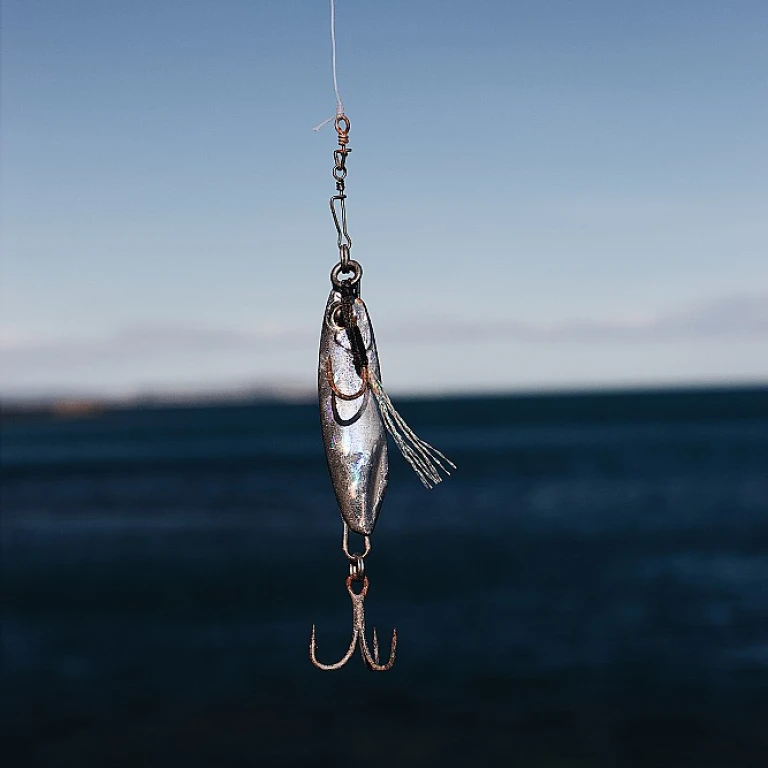


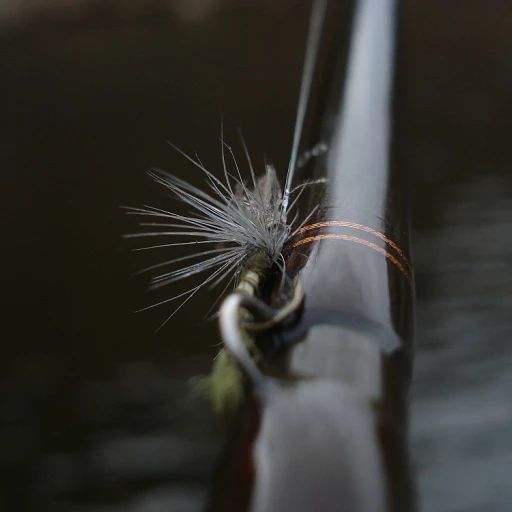

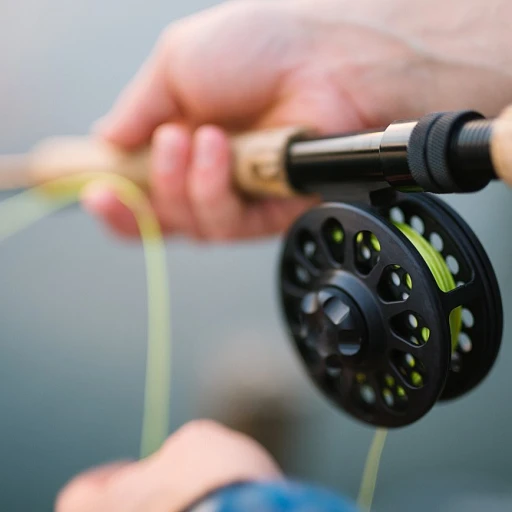
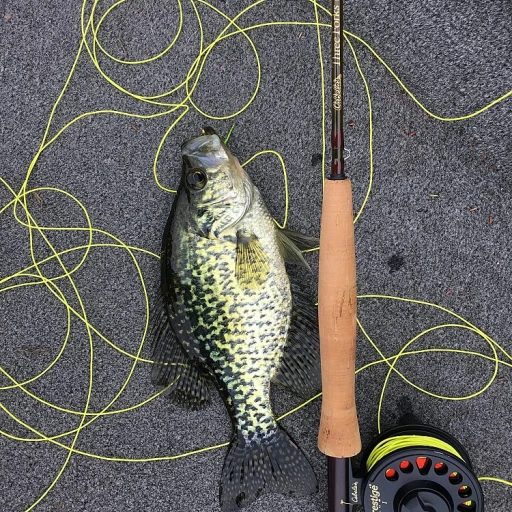
-large-teaser.webp)
-large-teaser.webp)

